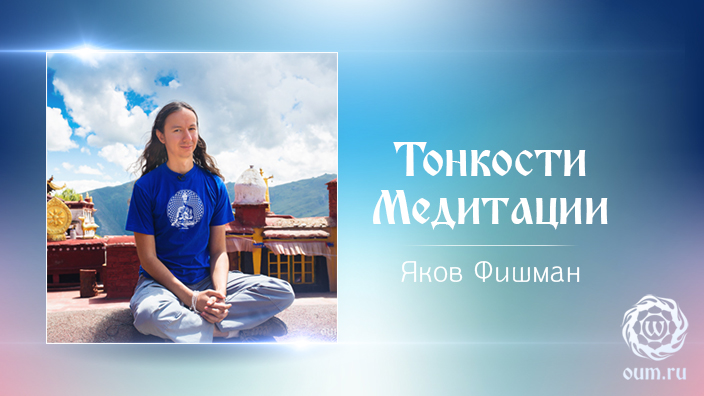VYou already know everything about meditation. We shoveled mountains of literature on this topic and attended dozens of trainings. You can name the Great Teachers by name and without hesitation list the names of the practices existing in the world. Inspirational tell your friends and acquaintances how great and useful it is to meditate.
However, the matter itself does not go further “Sit motionless for half an hour. A couple of times a month. When it will completely “cover”. But you can’t really start meditating. It seems that the motivation is strong, and there is enough knowledge, but something every time knocks out of the rut and prevents progress in practice.
This “something” is our mind, which has long decided for us what our practice should be, how long it should last and how soon we should become enlightened. Distortions in his activity manifest themselves in such a way that you either find an excuse for your inaction in practice, or you are mistaken about its course and results.
Here are some of the arguments that may come to your mind, as well as “antidotes” to this kind of delusion.
Oh, this is a very subtle maneuver! The story is about all of us – hostages of megalopolises. If you think like that, there will never be time. There will always be “more important things”, “urgent work”, laziness and malaise. The mind is in a hurry to do everything, often without doing anything worthwhile.
Therefore, as soon as you hear this in your head, remember the parable about the woodcutter. He chopped wood with a blunt ax, justifying his Sisyphean labor by the fact that he needed to cut down a lot of trees and had no time to sharpen the ax. With the proper motivation, time can always be found, under any circumstances, even for 10 minutes a day, to begin with.
It is also one of the most common scenarios for a person who is trying to combine the practice of meditation and socially active life. The mind does not really want to spend energy on creating new habits, and then the flows of external information are so strong that they unbalance our unstable psyche. I was just going to sit down, meditate, and then rrrraz – and you are already “on the machine” drinking tea, or flipping through the Instagram feed. Or you remember that the dishes are unwashed. Or you urgently need to run to the bank. Or forgot to water the flowers. Well, and so on …
If you know for yourself that you often forget about your intention to meditate, set alarms, write reminders, keep diaries. Plus, start practicing mindfulness in your daily life.
One of my mentors used to say: “When you eat an apple, eat an apple.” And this very accurately reflects the essence of being in the moment “here and now”. Try to avoid doing multiple things at the same time. And most importantly – thinking about a hundred things at the same time.
Try some simple exercises:
- brush your teeth with full involvement, without thinking about the past or future day;
- sit next to the child and consciously read a fairy tale to him, living its plot, and not yesterday’s quarrel with the boss;
- include a lecture on self-development and watch it while sitting in a meditative position, and not in snatches between a hundred household chores.
It is so simple. And it’s so difficult at the same time. But if you are patient, over time, this practice will help you maintain mindfulness with regard to meditation.
You can still practice mindfulness by “confusing the mind,” that is, by performing habitual actions in unusual ways:
- go home a different way;
- eat for some time with your left hand (or right if you are left-handed);
- monitor your speech and answer the interlocutor’s questions not with familiar phrases, but with meaningful sentences;
- go to work not by jogging, but slowly, specially allocating more time for this.
This is the third, most ridiculous, most paradoxical argument that you can only hear in your head about practice. Meanwhile, such an understanding of meditation as the absence of thoughts has already become a stereotype. Meditation is not an absence at all! This sheer presence is being “at the essence.”
Imagine a secretary who keeps minutes of the meeting of the founders of the company: he only records everything that happens. He does not interfere and does not point out: “Mr. Director, you are wrong. You have to say this or that. ” He does not make judgments and does not reflect, does not make judgments. Just watching. This is how your work in meditation should be, as if you are just watching a movie, letting your thoughts flow past your inner gaze.
The usual inner dialogue of the meditator:
You: So. We sit down. We calm down. Inhale, exhale.
Your mind: Itching on the right heel.
You do not react.
Your mind a minute later: The right heel is already numb. Will it not fall off? I’ll have to go to the doctor on Tuesday.
You: Oh, what if the truth falls off! I need to change my legs.
And in general, it would be nice to warm up … maybe go to yoga.
Mind: Not tomorrow, but on Tuesday. Tomorrow is a stupid teacher in the hall.
You: That’s it, shut up, I need to meditate.
A fraction of a second of the longed-for silence …
Again mind: Oh class! It turns out! Look, well, I can be silent when I want! By the way, when were you going to call your mom? Haven’t called in a thousand years.
Everything! There is no longer any desire to meditate, and thoughts are spinning more and more obsessively in my head that nothing will come of it. But the essence of the practice of meditation is to accept any state of mind, to notice thoughts, but not to forbid the mind to carry on its conversation.
The nature of the fish is to swim, the nature of the mind is to think. Allow yourself an internal dialogue. Drop all your notions of meditation.
The mind can tell us that practice is something that is done in silence at home, sitting on the rug for an hour or two. He says that you are already enlightened without five minutes, you just need to push a little (read – “get rid” of relatives, so as not to interfere with the practice, quit your job, throw out the computer and sit in the lotus position)
But circumstances inexorably come (a new position at work, the birth of a child, a move to a new apartment) – and now we have no time for meditation. You begin to blame yourself, swear at the circumstances, curse the Universe for what prevents you from “developing.” And you don’t realize that all the events in life are given to us for development.
As Ram Dass, an American guru and psychologist, said, “Once you come to such a moment when you realize that you are able to move along the Path only with a certain speed, conditioned by karmic behavior. You cannot get ahead of yourself, or be a “fake saint.”
Everything is the Path. You just have to keep going and practice mindfulness in your daily activities. Not to set yourself overestimated goals, but to measure your capabilities and make your practice flexible: today I spent two hours at home on the rug – well done. And tomorrow – 15 minutes, and then in a working chair. Great too! The day after tomorrow, the child is sick, and you should spend time with him – so be with him 100%, and do not run after your mind.
The same Ram Dass described the cycles of spiritual life in the following way: “Practice is like a swing. Each rise is usually followed by a new fall. Understanding this makes it somewhat easier to move in both phases … In addition to the up and down cycles, there is also an in and out cycle. In other words, there are stages in which you feel drawn into inner work, and all you are looking for is a quiet place to meditate and keep moving forward; and then there comes a time when you turn to the outside world and strive to get involved in the life of the market. Both parts of the cycle are part of our practice, because what happens to you in the market helps your meditation, and what happens in your meditation helps you participate in the life of the market without attachment. ”
And in general, the whole nature of existence, according to the teachings of the Buddha, is impermanence. We need to find a way to respect these natural cycles both in everyday life and in practice.
Remember these common mind traps. And may your practice be continuous, fruitful and beneficial to all sentient beings.
Ohm!






